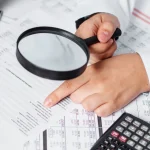Balance Sheet:
So far in this series, we have identified the basic financial statements and delved into the key elements of the Income Statement. This installment addresses the Balance Sheet, a statement of what remains at a single point in time during the life of a business.
If a company only conducts transactions in cash, what remains at any point in time will be Cash and Retained Earnings (the accumulated profits.) This is rarely the case, however. More often, business transpires for which cash has not yet changed hands or value purchased has not been delivered. These timing differences are recognized on the Balance Sheet.
Because the essence of business is the exchange of goods or services for equivalent value, accounting transactions must have both a ‘give’ (debit) and a ‘take’ (credit) to keep the books in balance. Since the Balance Sheet is the residual of all transactions, it must also ‘balance’ (hence its name) and accounts are grouped to demonstrate that Assets = Liabilities + Equity.
Assets – What the company owns
- Cash & Equivalents: bank accounts and investments
- Accounts Receivable: amounts owed to the company for products or services delivered that customers have not yet paid for
- Inventory: completed products not yet sold and materials to make more
- Fixed Assets (net of accumulated depreciation): land, buildings, and equipment that will serve the company for more than 1 year
Liabilities – What the company owes
- Accounts Payable: amounts the company has been billed for goods & services it has received from vendors but has not yet paid
- Credit Card Balances: amounts charged to credit cards but not yet paid
- Accrued Expenses: goods & services the company has received but has not yet been billed for by their vendors
- Long Term Debts: Bank loans, Promissory Notes, or Leases
Equity – Who has claim to the value retained in the business
- Investment by Owners: owner contributions and venture financing less Owner Draws and Distributions
- Retained Earnings: the life-to-date accumulated earnings or losses generated by the business. The detail of this amount is the life-to-date Income Statement.
Since the Balance Sheet holds all of the residual values of the business, it is often considered to represent the financial health of the company. As such, investors and lenders perform many tests on these numbers to assess the company’s short and long-term sustainability. Some of the more common of these are:
- Current Ratio = Current Assets / Current Liabilities used to determine if a company has adequate funds on hand to pay all of its current debts, a measure of liquidity.
- Quick Ratio = (Current Assets – Inventory) / Current Liabilities is the same as #1 but recognizes that Inventory is not as easily turned into Cash; because of this, it is referred to as the Acid Test
- Accounts Receivable Days = A/R / Current Month Sales * 30 represents how many days of Sales are unpaid. When compared to the company’s sales terms, indicates collection efficiency.
- Inventory Days = Inventory / Next Month CoGS * 30 shows how many days of Sales are being held in inventory; too few and there may be delays in filling orders, too many and there is a risk of obsolescence.
- Current-Total Liabilities Ratio = Current Liabilities / Total Liabilities is typically compared to industry norms to determine if the cash demand to settle debts in the near-term vs long-term horizon is appropriate.
- Debt to Equity = Total Liabilities / Total Equity shows the relationship of creditors to owners in their respective claim on the company’s assets.







